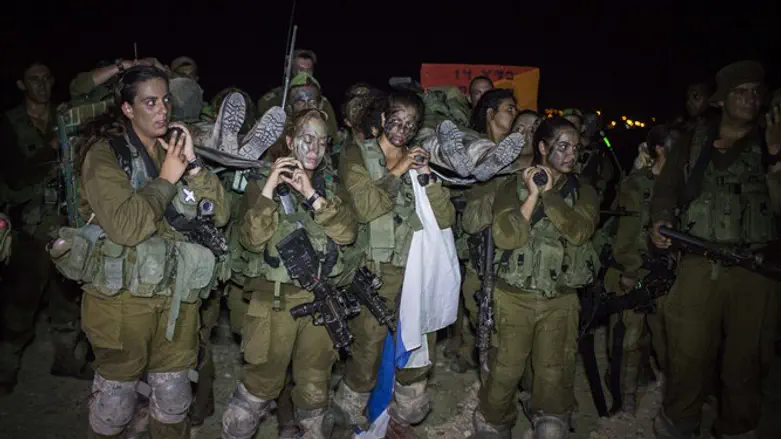
This week new soldiers were drafted into the mixed-gender (henceforth "mixed") combat units in the IDF, chief among them the longest operating mixed unit, the Caracal battalion.
However, despite the high numbers shown in IDF stats of the drafts into these units, indicating success, experts on the matter warn that the real picture is far less rosy.
Reserve General Raz Sagi, head of the Forum for a Strong IDF (FSIDF), who has devoted several years of his life to researching the effects of integrating women into combat roles, claims in an interview with Arutz Sheva that the rise in the number of draftees into mixed units should "make us lose sleep."
"When Caracal was formed in 2001 it was a small battalion of 300 combat soldiers, most of whom were women, and the chance that someone would get hurt was small. Today, however, when the army is taking entire already established infantry units and turning them into mixed ones it's disturbing. The Combat Readiness Department claims that they've now lowered the physical strength and fitness requirements four times in order to enable women to be accepted, and this disturbs me. Because, obviously, if the standards are lowered so that someone will be accepted, this means that the actual operational fitness and capability of the unit goes down," Sagi explained.
According to General Sagi, the great like of equality in the IDF is exposed by this lowering of standards. "What equality is there in the IDF if the female combat soldiers in the mixed units run less, carry less weight, and participate less in long marches. The female soldiers become second class. This isn't equality. Justice Strasbourg-Cohen already ruled in the Supreme Court Alice Miller case that the value of operational capability is higher than the value of equality. When the male soldiers in Caracal run, the female ones walk, when the males stand, the females sit. This is equality?"
In addition, Sagi pointed out the great health damage often suffered by female combat soldiers in the IDF. "Even with the lowered fitness standards, 50% of the female soldiers in Caracal suffer permanent injuries such as ruptured discs, and others."
A more intangible but more less serious problem, according to Sagi, is the effect serving in a mixed unit has on the soldiers' morale. "When you look into the morale in these units, you find a serious problem. The men who are assigned to these units lose their morale. They take off the tags identifying their unit when they come home because they're embarrassed to serve there. Soldiers who don't have pride in their unit won't charge into battle."